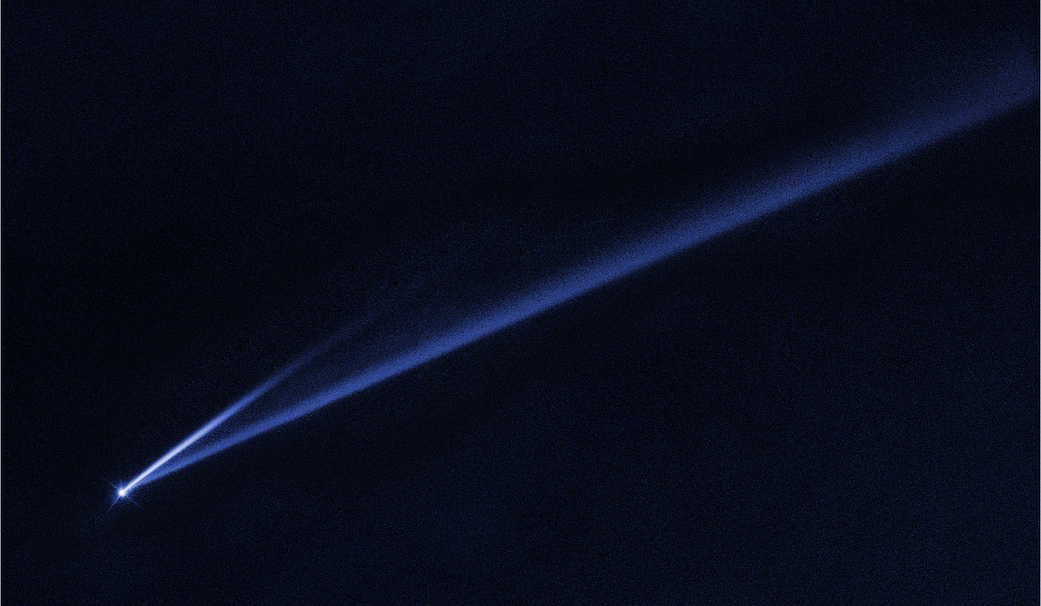美国国家航空航天局(NASA)哈勃太空望远镜(Hubble Space Telescope)和其他天文台的最新数据显示,一颗小小行星在旋转过程中被捕获,旋转速度之快足以将物质抛掷出去。
哈勃望远镜拍摄的图像显示了两条窄窄的彗星状彗尾,由小行星(6478)高尔特喷出的尘埃碎片组成。每条尾巴都代表着小行星轻轻抛撒物质的一个阶段——这是高尔特开始分裂的关键证据。
1988年发现的这颗2.5英里宽(4公里宽)的小行星曾多次被观测到,但这些碎片的尾巴是它解体的第一个证据。高尔特距离太阳2.14亿英里(3.44亿公里)。在火星和木星之间已知的大约80万颗小行星中,天文学家估计,小行星带中发生这种类型的事件很少见,大约每年发生一次。
观察一颗小行星脱离胶合状态,让天文学家有机会研究这些太空岩石的构成,而无需派遣航天器对它们进行采样。
A small asteroid was caught in the process of spinning so fast it’s throwing off material, according to new data from NASA’s Hubble Space Telescope and other observatories.
Images from Hubble show two narrow, comet-like tails of dusty debris streaming from the asteroid (6478) Gault. Each tail represents an episode in which the asteroid gently shed its material — key evidence that Gault is beginning to come apart.
Discovered in 1988, the 2.5-mile-wide (4-kilometer-wide) asteroid has been observed repeatedly, but the debris tails are the first evidence of disintegration. Gault is located 214 million miles (344 million kilometers) from the Sun. Of the roughly 800,000 known asteroids between Mars and Jupiter, astronomers estimate that this type of event in the asteroid belt is rare, occurring roughly once a year.
Watching an asteroid become unglued gives astronomers the opportunity to study the makeup of these space rocks without sending a spacecraft to sample them.



